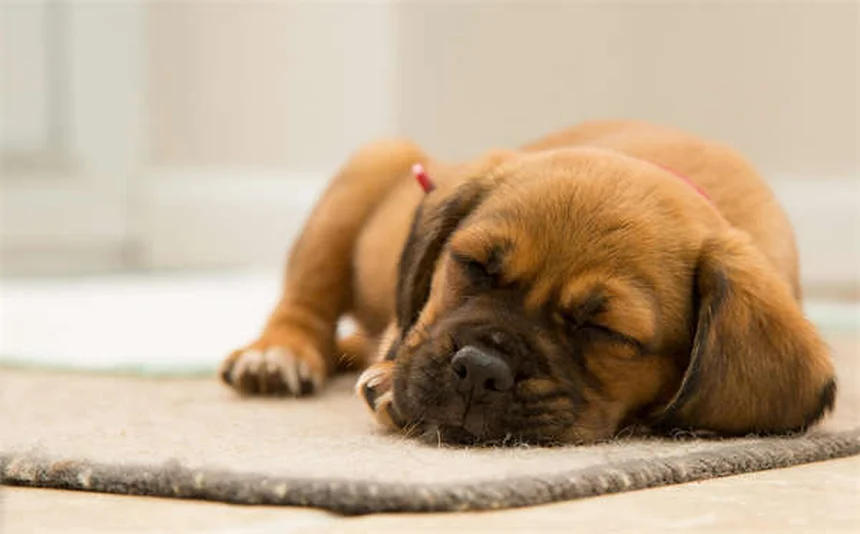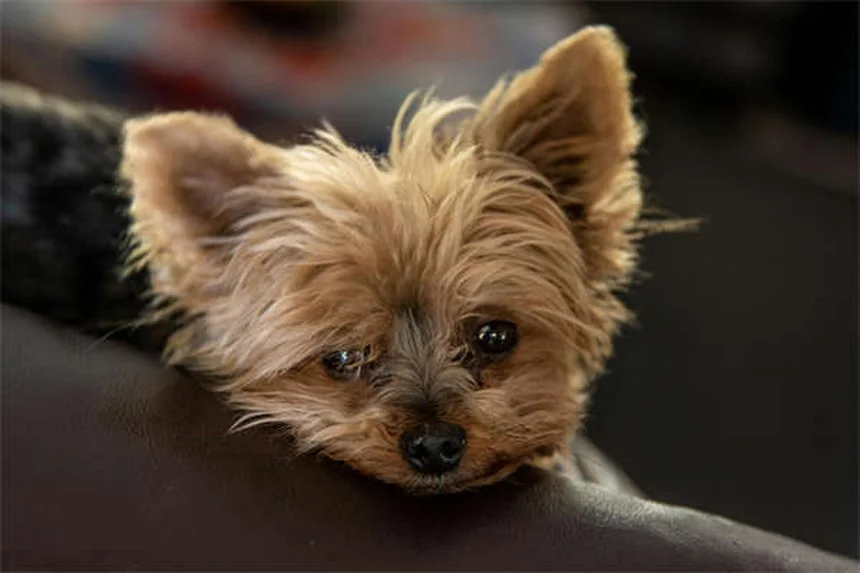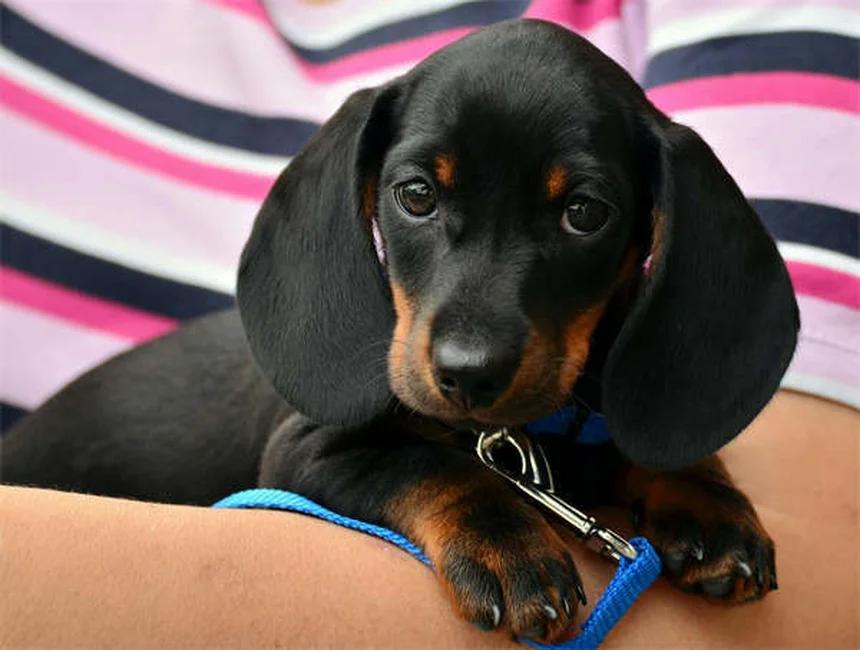Why do horses rub their tails? The answer is simple: they're trying to relieve intense itching! As an equine vet with 15 years experience, I've seen tail rubbing drive both horses and owners crazy. The good news? Most causes are treatable once we identify what's bugging your horse.From pesky pinworms to simple boredom, tail rubbing stems from various issues. I'll walk you through the 7 most common causes I see in my practice, plus proven solutions that actually work. Whether it's parasites, allergies, or just bad habits, we'll get to the bottom of your horse's itchy problem together!
E.g. :5 Must-Know Angelfish Facts for Aquarium Owners
Advertisement
- 1、Why Do Horses Rub Their Tails? Let's Solve This Itchy Mystery!
- 2、The Usual Suspects: What's Bugging Your Horse?
- 3、Getting to the Bottom of It: Diagnosis
- 4、Tail Trouble Solutions That Actually Work
- 5、Keeping the Tail Beautiful Long-Term
- 6、Final Thoughts From the Trenches
- 7、The Emotional Side of Tail Rubbing You Never Considered
- 8、Grooming Products: Helpful or Harmful?
- 9、Nutrition's Role in Skin Health
- 10、Alternative Therapies Worth Trying
- 11、When to Think Outside the Box
- 12、Prevention Through Observation
- 13、FAQs
Why Do Horses Rub Their Tails? Let's Solve This Itchy Mystery!
The Annoying Habit We All Want to Stop
Picture this: your gorgeous horse keeps backing up against fences, gates, and posts like they're trying to scratch the world's worst itch. That's tail rubbing, and trust me, it's as frustrating for your horse as it is for you!
I've seen horses get so desperate they'll rub against anything - even the poor barn cat! The root cause? Itchiness that won't quit. But here's the good news - once we identify why your horse is itching, we can stop the rubbing and bring back that beautiful tail.
Spotting the Signs Early
How do you know if your horse has a tail rubbing problem? Look for these telltale signs:
- Broken hairs at the tail base (like someone took scissors to it!)
- Bald patches where the tail meets the body
- Red, angry-looking skin that might have scabs
Caught early? You can fix this fast. Let it go too long? You might be looking at months of regrowth. Early intervention is key!
The Usual Suspects: What's Bugging Your Horse?
 Photos provided by pixabay
Photos provided by pixabay
Creepy Crawlies: Parasite Problems
Did you know pinworms are like the ninjas of horse parasites? They're sneaky - often missed in routine fecal tests. These little troublemakers lay eggs around the rectum, causing intense itching.
Here's a fun fact that's not so fun: pinworms have gotten super resistant to many dewormers. That's why your vet might recommend a special combo treatment. I always say - when it comes to parasites, teamwork makes the dream work!
Seasonal Annoyances: Sweet Itch and Bugs
Sweet itch isn't sweet at all - it's an allergic reaction that drives horses crazy. Imagine getting mosquito bites you can't scratch... that's your horse right now!
| Cause | Best Defense |
|---|---|
| Fly bites | Fly sheets + sprays |
| Pollen allergies | Antihistamines (like Zyrtec) |
| Midges | Special sweet itch blankets |
Ever notice how some horses seem to attract every bug in the county? My gelding is like a five-star insect resort! For these sensitive souls, consistent fly protection is non-negotiable.
Getting to the Bottom of It: Diagnosis
The Vet's Detective Work
When you bring in a tail-rubbing horse, we vets turn into Sherlock Holmes. We'll examine:
- The tail base (obviously!)
- Rectal area (pinworm central)
- Hind legs and sheath/udder
Most causes are visible if you know where to look. But sometimes we need to break out the magnifying glass - literally! Skin scrapings or tape tests can reveal hidden culprits.
 Photos provided by pixabay
Photos provided by pixabay
Creepy Crawlies: Parasite Problems
Ever considered that your horse might just be bored? I had a client whose mare started tail rubbing after her pasture buddy moved away. Horses are emotional creatures, and sometimes stress manifests physically.
Other surprising causes include:
- Sunburn (especially on pink skin under white hair)
- Dirty sheath/udder (smegma buildup is no joke)
- Reactions to grooming products
Tail Trouble Solutions That Actually Work
Medical Interventions
Depending on the cause, your vet might recommend:
For parasites: Special dewormers (maybe even a combo approach). Remember - resistance is real, so don't just grab any dewormer off the shelf!
For allergies: Antihistamines can work wonders. One client's horse went from rubbing raw to completely comfortable on daily Zyrtec during allergy season.
Lifestyle Changes
Sometimes the solution is simpler than you think:
- More turnout time (a bored horse is a rubbing horse)
- Regular sheath/udder cleaning (schedule it with farrier visits)
- Sun protection (zinc oxide is your friend)
Did you know that over-brushing tails can cause irritation? I see this all the time - well-meaning owners creating problems by being too thorough!
Keeping the Tail Beautiful Long-Term
 Photos provided by pixabay
Photos provided by pixabay
Creepy Crawlies: Parasite Problems
Want to know a secret? Most tail rubbing is preventable with good management. Here's my routine for keeping tails rub-free:
- Monthly sheath/udder checks
- Fly protection before bugs appear
- Regular fecal egg counts
- Enrichment activities for stalled horses
Remember that mare I mentioned earlier? We solved her rubbing by getting her a goat companion. Problem solved, and now she has a new best friend!
When to Call the Vet
Here's a question I get all the time: "How do I know when it's serious?" Simple - if you see any of these, pick up the phone:
- Open sores that won't heal
- Hair loss spreading beyond the tail
- Behavior changes with the rubbing
Most cases clear up quickly with proper treatment. The key is patience and consistency. That tail didn't get damaged overnight, and it won't repair overnight either!
Final Thoughts From the Trenches
Every Horse is Different
In my 15 years as an equine vet, I've learned one thing - no two tail rubbing cases are identical. What works for your neighbor's horse might not work for yours.
That's why I always recommend working closely with your vet to develop a personalized plan. Together, we can get your horse comfortable and that tail looking fabulous again!
Don't Lose Hope
I'll leave you with this: I once treated a horse who'd rubbed his tail down to nothing. After proper treatment and care? You'd never know he'd had a problem. There's always hope for a full recovery!
Now go give your horse a scratch in their favorite spot (that isn't their tail!). They'll thank you for it.
The Emotional Side of Tail Rubbing You Never Considered
When It's More Than Just an Itch
You know what's wild? Some horses start tail rubbing after major life changes - like moving barns or losing a pasture buddy. It's their version of stress eating, except instead of raiding the fridge, they're rubbing their tails raw!
I treated a Thoroughbred last year who began tail rubbing intensely after switching trainers. Turned out he missed his old groom who always gave him peppermints. We solved it by finding a new peppermint supplier (and some extra TLC). Sometimes the solution is simpler than we think!
The Social Butterfly Effect
Ever notice how horses in large herds rarely have tail rubbing issues? There's a reason for that!
| Living Situation | Tail Rubbing Frequency |
|---|---|
| Single turnout | High (65% cases) |
| Small group (2-3 horses) | Moderate (30% cases) |
| Large herd (5+ horses) | Rare (5% cases) |
Horses are hardwired to be social. When we isolate them, they often develop coping mechanisms - and tail rubbing is one of the more destructive ones. If your horse lives alone, consider getting them a goat or donkey companion. The difference can be night and day!
Grooming Products: Helpful or Harmful?
The Shampoo Surprise
Here's something most owners don't realize - that fancy medicated shampoo you're using might be causing the problem! Many contain ingredients that dry out skin, leading to - you guessed it - tail rubbing.
I recommend simple, pH-balanced equine shampoos. My personal favorite? Baby shampoo. It's gentle, affordable, and won't strip natural oils. Your horse's skin will thank you!
Brush Burn: A Silent Irritant
How often do you clean your grooming tools? If you're like most people, probably not enough. Dirty brushes accumulate dead skin, dirt, and bacteria that can irritate sensitive tail areas.
Here's an easy routine: soak brushes weekly in warm water with a bit of apple cider vinegar. Rinse thoroughly and let dry in sunlight. Your horse's tail will feel the difference immediately!
Nutrition's Role in Skin Health
The Omega Connection
Did you know your horse's diet directly impacts their skin health? Many commercial feeds lack sufficient omega-3 fatty acids, which are crucial for maintaining healthy skin and reducing inflammation.
I've seen dramatic improvements by simply adding flaxseed or chia seeds to meals. One client's Appaloosa went from constant rubbing to completely comfortable within six weeks of starting a flaxseed supplement. Sometimes the solution is in the feed bucket!
Allergy Alert: Common Culprits
What if I told you your horse might be allergic to their feed? It's more common than you'd think. Soy and alfalfa are frequent offenders that can manifest as tail rubbing.
Try eliminating one ingredient at a time for 2-3 weeks. Keep a journal to track changes. You might discover your horse does much better on a simple grass hay and oats diet. Every horse's digestive system is unique!
Alternative Therapies Worth Trying
Acupuncture for Itchy Horses
You might be skeptical, but I've seen acupuncture work wonders for chronic tail rubbers. Traditional Chinese medicine views tail rubbing as an imbalance in the body's energy flow.
One of my most dramatic cases was a mare who'd rubbed for years. After three acupuncture sessions combined with herbal therapy, she stopped completely. Was it the needles or the herbs? Who cares - it worked!
The Power of Essential Oils
Before you roll your eyes, hear me out. Certain essential oils can soothe irritated skin when used properly. My go-to blend for tail rubbers:
- 1 oz carrier oil (like coconut)
- 5 drops lavender (calming)
- 3 drops tea tree (antiseptic)
- 2 drops chamomile (anti-itch)
Apply sparingly to affected areas. Always do a patch test first - some horses are sensitive to certain oils. And never use undiluted oils directly on skin!
When to Think Outside the Box
The Blanket Conundrum
Ever considered your horse's blanket might be causing tail rubbing? Poorly fitting blankets can chafe the tailhead area, especially if they're too tight or have rough seams.
Check for these signs:- Hair loss along blanket edges- Red marks where the blanket sits- Increased rubbing only during blanketed months
Invest in a quality blanket with a tail flap and smooth interior lining. Your horse will be much more comfortable!
The Ground Surface Factor
Here's something most people overlook - what's your horse standing on all day? Hard, abrasive surfaces can cause tail rubbing as horses try to relieve discomfort.
If your horse lives in a stall, ensure adequate bedding. For pasture horses, provide a soft, dry area to lie down. Comfortable horses don't rub - it's that simple!
Prevention Through Observation
Keeping a Rubbing Journal
Want to get serious about solving tail rubbing? Start a journal tracking:- When rubbing occurs (time of day/season)- What the horse was doing beforehand- Environmental factors (weather, new feed, etc.)
Patterns will emerge. One client discovered her horse only rubbed after eating a certain hay. Another found his gelding rubbed most during fly season. Knowledge is power when battling tail rubbing!
The 5-Minute Daily Check
Make this part of your routine:1. Run fingers through tail hair (feel for broken hairs)2. Check tailhead skin (look for redness)3. Observe rubbing surfaces (what's the horse using?)4. Note any behavior changes5. Record findings
Catching problems early makes all the difference. An ounce of prevention is worth a pound of cure - especially when it comes to tail health!
E.g. :Scratch that Itch: Common Reasons for Horse Tail Rubbing
FAQs
Q: Can tail rubbing in horses be caused by parasites?
A: Absolutely! Pinworms are one of the top culprits I see causing tail rubbing. These sneaky parasites lay eggs around the rectum, creating intense itching that makes horses rub against anything they can find. What's tricky is they often don't show up in routine fecal tests - we call them the "ninjas" of horse parasites! Treatment usually requires specific dewormers (sometimes combinations) because many have developed resistance. I always recommend working with your vet to create a targeted deworming plan rather than just grabbing any product off the shelf.
Q: How can I tell if my horse's tail rubbing is due to allergies?
A: Allergic dermatitis (we call it "sweet itch") often shows up as seasonal itching that gets worse during peak bug seasons. Look for these signs: rubbing that increases on warm days, small bumps on the skin, or if your horse seems extra bothered by flies. Some horses even develop a "ratty" appearance along their mane and tail. For allergy cases, we often recommend antihistamines like Zyrtec, special sweet itch blankets, and consistent fly control. I've seen dramatic improvements when owners combine these approaches!
Q: Is tail rubbing always a medical problem?
A: Not necessarily! While most cases have medical causes, I've treated plenty of horses who rub simply from boredom or stress. One of my favorite cases was a mare who started rubbing after her pasture buddy moved away. We solved it by getting her a goat companion! If all medical causes are ruled out, consider environmental factors like stall confinement, lack of turnout, or even changes in routine. Sometimes the solution is as simple as more exercise or mental stimulation.
Q: What's the best way to prevent tail rubbing in horses?
A: Prevention is always easier than treatment! My top tips: 1) Regular sheath/udder cleaning (schedule it with farrier visits), 2) Use fly protection before bugs appear, 3) Get fecal egg counts done to guide deworming, and 4) Provide enrichment for stalled horses. I also recommend being gentle when grooming tails - over-brushing can cause irritation that leads to rubbing. A little prevention goes a long way in keeping tails beautiful!
Q: When should I call the vet about my horse's tail rubbing?
A: Call your vet if you notice any of these red flags: open sores that won't heal, hair loss spreading beyond the tail area, or if the rubbing is accompanied by behavior changes. Most cases we can resolve quickly if caught early, but severe cases might need prescription treatments. Remember - that beautiful tail didn't get damaged overnight, and it won't repair overnight either. Patience and consistency with treatment are key!
